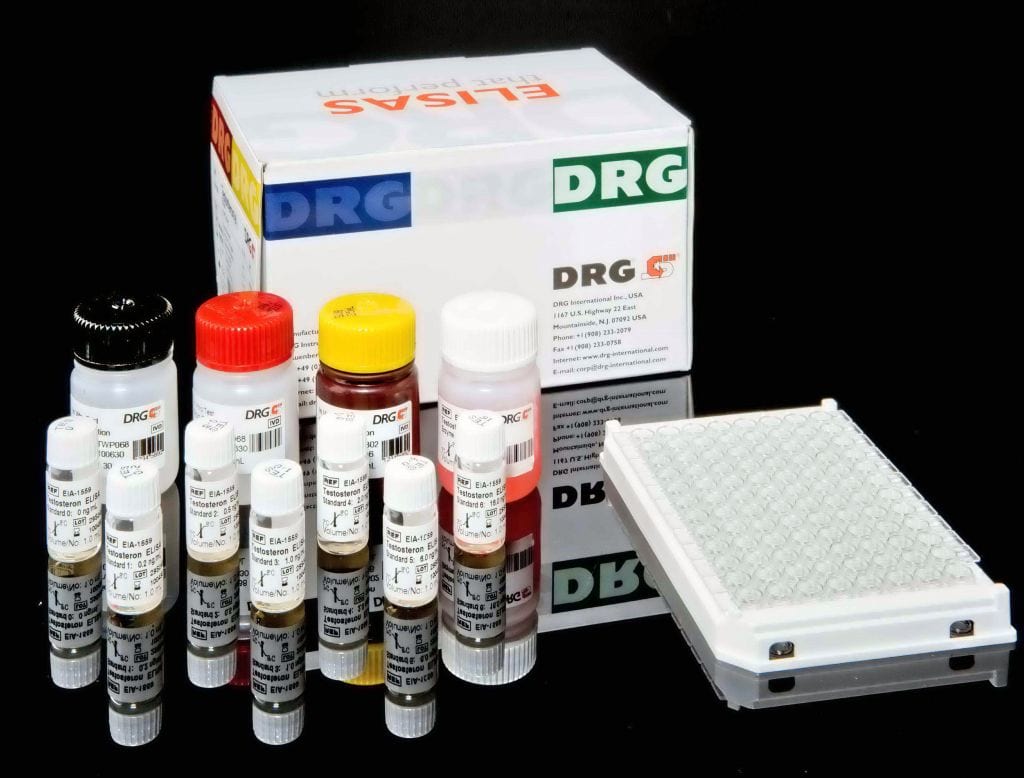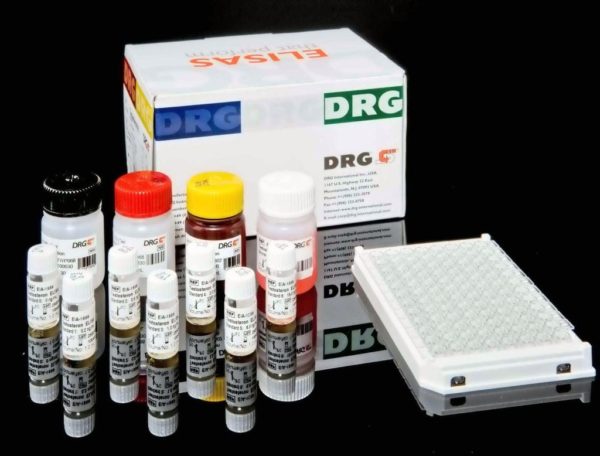Description
The TSH receptor (TSHR) autoantibody (TRAb) ELISA is intended for use by professional persons only for the quantitative determination of TRAb in human serum. Hyperthyroidism in GravesÕ disease is due to the presence of autoantibodies to the TSHR and measurement of these autoantibodies can be useful in disease diagnosis and management.
In the ELISA, TRAb in patientsÕ sera, calibrators and controls are allowed to interact with TSHR coated onto ELISA plate wells. After a 2 hour incubation, the samples are discarded leaving TRAb bound to the immobilised TSHR. A human monoclonal autoantibody to the TSHR, labelled with biotin (M22-biotin) is added in a second incubation step, where it interacts with immobilised TSHR which have not been blocked by bound TRAb. The amount of M22_biotin bound to the plate is then determined in a third incubation step by addition of streptavidin peroxidase (SA-POD), which binds specifically to biotin. Excess unbound SA-POD is then discarded and addition of the peroxidase substrate
3,3Õ,5,5Õ-tetramethylbenzidine (TMB) results in the formation of a blue colour. This reaction is stopped by addition of stop solution causing the well contents to turn from blue to yellow. The absorbance of the yellow reaction mixture at 450nm is then read using an ELISA plate reader. A lower absorbance indicates the presence of TRAb in a test sample (as TRAb inhibit the binding of M22-biotin to TSHR coated plate wells).The measuring interval is 0.4 – 30 U/L (NIBSC 90/672).




